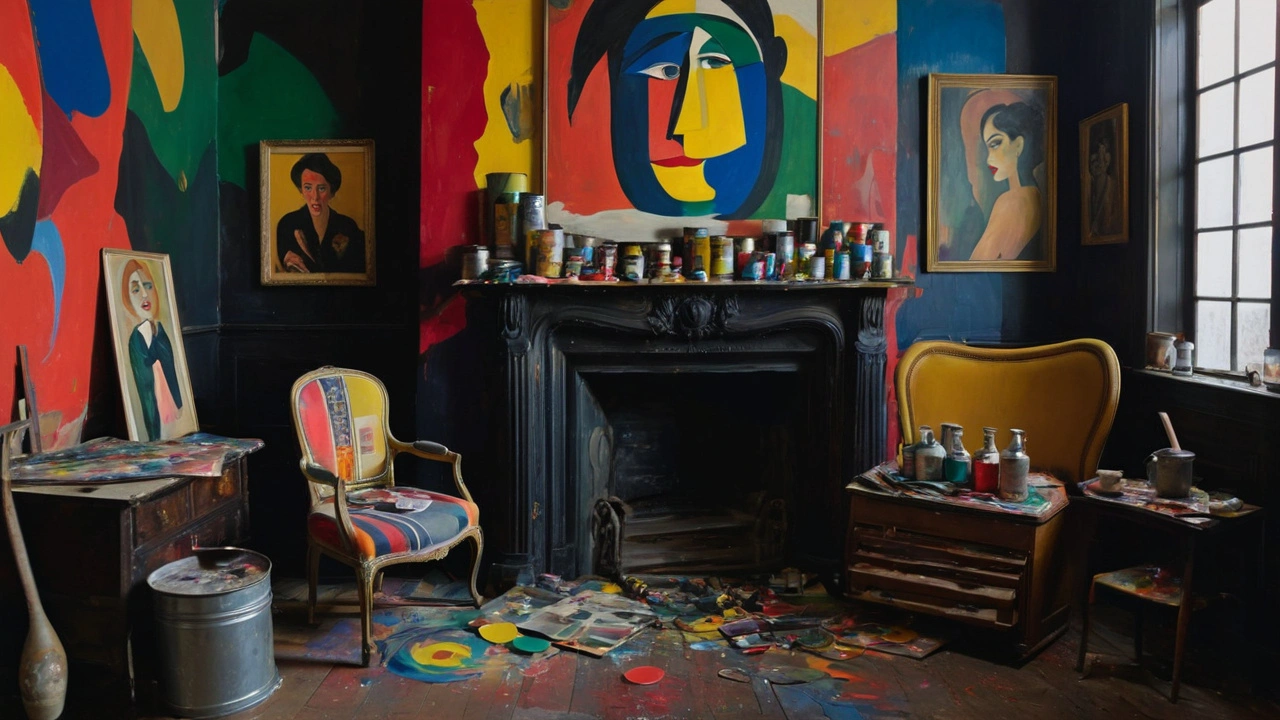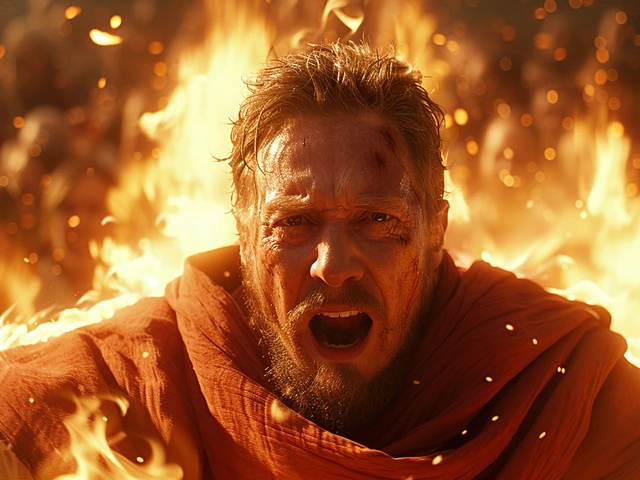Expressionism burst onto the scene in the early 20th century, shaking the art world with its bold colors and dramatic forms. Artists within this movement were less interested in portraying the world realistically. Instead, they focused on expressing emotions and inner experiences.
The movement didn't arise out of a vacuum. It was a reaction to the rapidly changing societal landscape, including industrialization, war, and urbanization. Expressionism served as a mirror, reflecting the turbulent times and the complex human emotions tied to them.
Understanding Expressionism involves delving into its origins, recognizing its unique characteristics, and learning about the artists who defined it. This article aims to guide readers through these aspects, providing a clearer picture of how Expressionism responded to the modern world's challenges and left an indelible mark on the art world.
- Origins of Expressionism
- Key Characteristics of Expressionism
- Influential Expressionist Artists
- Impact on Modern Art
- Tips for Appreciating Expressionist Art
Origins of Expressionism
Expressionism didn't just pop out of nowhere; it arose from a mix of social, emotional, and cultural factors in the early 20th century. The movement took shape primarily in Germany, with its seeds planted in the late 19th century. Europe was transforming rapidly; cities were expanding, industries were booming, and societies were changing. These shifts provoked anxiety and unrest among artists and intellectuals, who started questioning the established norms and traditions.
One of the earliest groups to embrace these ideas was called Die Brücke (The Bridge). Founded in 1905 in Dresden by Ernst Ludwig Kirchner, Fritz Bleyl, Erich Heckel, and Karl Schmidt-Rottluff, this group aimed to create a 'bridge' between the old ways and the new. They were heavily influenced by the works of Edvard Munch and Vincent van Gogh, whose art delved into the realms of emotion and existential angst. Die Brücke artists used bold colors, exaggerated forms, and raw brushstrokes to convey their intense emotional responses to modern life.
Another significant group was known as Der Blaue Reiter (The Blue Rider), formed in Munich in 1911 by Wassily Kandinsky, Franz Marc, and others. This group focused more on spiritual and symbolic themes. They believed that art should express an inner truth or spiritual reality rather than adhere to traditional rules of representation. Kandinsky, often considered the father of abstract art, emphasized the importance of color and form in evoking emotions and conveying spiritual messages.
The Expressionist movement wasn't confined to visual arts alone. It also influenced literature, theater, architecture, and film. Writers like Franz Kafka and James Joyce explored themes of alienation and existential dread, which resonated with Expressionist sensibilities. In theater, playwrights like Bertolt Brecht and August Strindberg created works characterized by stark, intense performances and abstract settings, aiming to evoke emotional responses from their audiences.
Why did Expressionism emerge when it did? The world was witnessing unprecedented changes. The rapid pace of industrialization led to crowded cities and impersonal life. Traditional social structures were breaking down, and the specter of World War I loomed large. Expressionism can be seen as a response to this new, often bewildering reality. It provided a way for artists to make sense of their world, pushing the boundaries of what art could be and do.
"No great artist ever sees things as they really are. If he did, he would cease to be an artist" – Oscar Wilde
The rise of Expressionism was not just a reaction but also a form of protest against materialism, societal norms, and the complacency of the bourgeoisie. By focusing on the emotional and psychological states of individuals, Expressionists sought to uncover deeper truths about human existence. This approach resonated with many, leading to the movement's widespread influence and enduring legacy in art history.
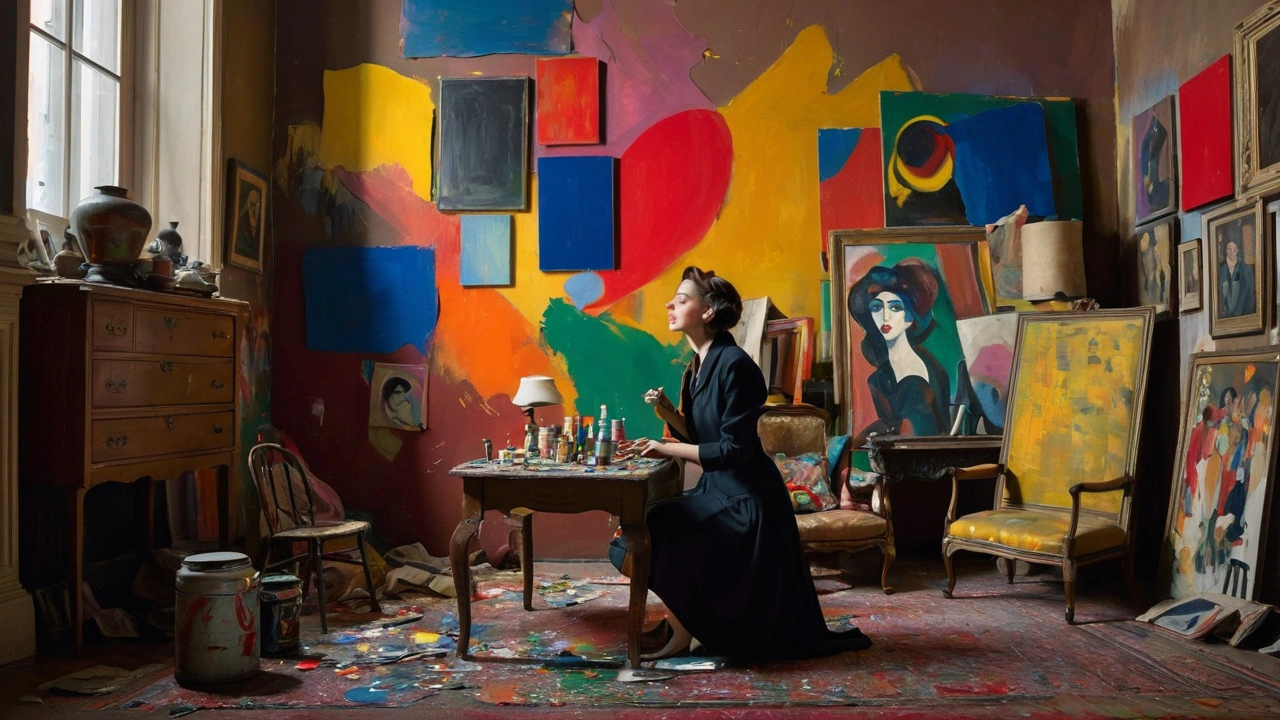
Key Characteristics of Expressionism
Expressionism stands out with its raw energy and emotional depth, a stark contrast to the precision of earlier art movements. One defining feature is the use of bold, often jarring colors. Artists like Edvard Munch and Ernst Ludwig Kirchner chose vivid hues to evoke intense feelings, making the viewer feel the angst, fear, and passion contained in each piece. This daring color choice was intended to communicate more than what met the eye, diving deep into human experience and emotion.
Another cornerstone of Expressionist art is its exaggerated shapes and forms. Instead of striving for technical accuracy, Expressionist artists distorted their subjects to convey psychological states. Just look at Munch’s famous work, “The Scream,” where the figure’s anguish is amplified by the swirling, almost chaotic background. Such distortion wasn’t merely for show; it aimed to break free from the constraints of traditional art, allowing for a more subjective and personal representation of reality.
Expressive brushwork also plays a crucial role in defining Expressionist works. Artists utilized dynamic, sometimes violent brush strokes to mirror their inner turmoil and emotional intensity. This technique added a layer of movement and urgency, making the artwork seem alive and pulsating with the artist’s own energy. Van Gogh’s later works, though slightly predating the peak of Expressionism, also exhibited this fervent brushwork, influencing later Expressionist painters.
Often, Expressionist art carries a certain sense of alienation and isolation. These themes are not accidental; they reflect the social and political unease of the early 20th century. In the aftermath of World War I, the world was grappling with changes and uncertainties, which Expressionist artists captured poignantly in their somber and sometimes unsettling artworks. Otto Dix’s war paintings are prime examples, displaying the grim reality of post-war society.
As art historian Norbert Lynton once noted, “Expressionism is about feeling rather than fact, and the intensity of emotion in the work is what engages the viewer.”
Last but not least, Expressionism frequently uses symbolism to explore deeper meanings. Symbols in Expressionist art often serve as metaphors for broader societal issues or personal struggles. Franz Marc’s use of animals, for instance, wasn’t just decorative. His blue horses and yellow cows represented his views on spirituality and humankind’s place in the natural world.
By paying attention to these characteristics of Expressionism, one can gain a richer understanding of the movement. Whether it’s through the aggressive colors, emotive brushwork, or potent symbolism, each element intertwines to create a profound impact that continues to resonate with audiences today.
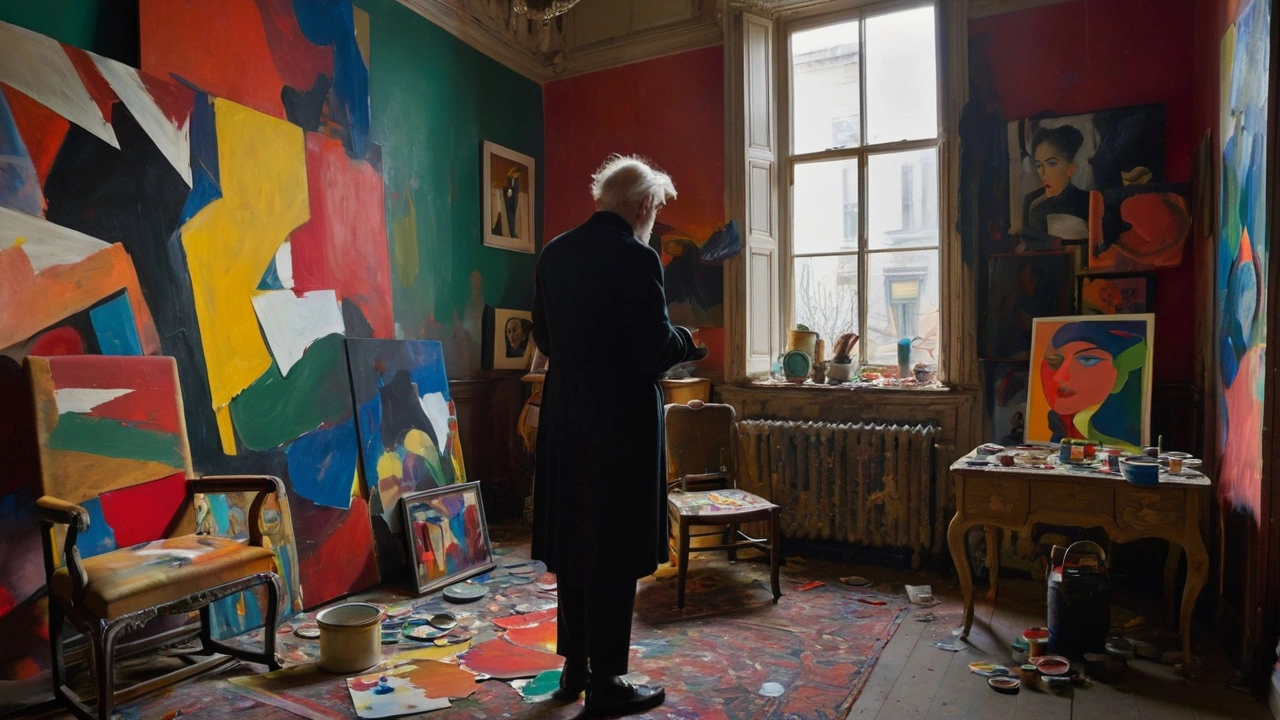
Influential Expressionist Artists
When we talk about influential Expressionist artists, certain names stand out prominently. These visionaries didn't just push boundaries; they shattered them, leaving a lasting imprint on the world of art. One of the most significant figures in this movement is Edvard Munch. His painting 'The Scream' has become iconic, a universal symbol of existential angst. Munch's work delves into themes like love, fear, and death, reflecting the turmoil and anxiety of modern existence.
An equally towering figure is Wassily Kandinsky. Often hailed as one of the pioneers of abstract art, Kandinsky believed that art should transcend physical reality and should be a means of conveying profound emotional and spiritual experiences. His bold use of color and form was revolutionary, laying the groundwork for subsequent artistic movements.
"Color is a power which directly influences the soul. Colors are the keyboard, the eyes are the harmonies, the soul is the piano with many strings." — Wassily Kandinsky
Ernst Ludwig Kirchner, a founding member of the Die Brücke group, brought a raw, almost primitive energy to his works. His often jagged and distorted forms were a direct reaction to the alienation and disquiet of urban life. Kirchner's art is characterized by its intense emotions and dynamic compositions, which captured the chaotic energy of an industrialized society.
Egons Schiele pushed the boundaries of the human form in his often controversial works. Schiele's figures were emaciated, twisted, and often shockingly raw. But these elements served to intensify the emotional impact of his work, offering a stark and unflinching look at the human condition.
The influence of Franz Marc cannot be overstated either. As a co-founder of the Blaue Reiter group, Marc sought to express spiritual truths through his art. His vivid depictions of animals, using non-naturalistic colors and symbolic forms, were a means of exploring deeper philosophical and mystical concepts. His works often reflect a yearning for a harmonious existence that contrasts sharply with the destructive forces of the modern world.
Each of these artists, with their unique styles and visions, contributed significantly to the Expressionist movement. They broke away from traditional techniques and subject matter to explore new avenues of emotional and psychological depth. Their legacy continues to inspire and challenge contemporary artists and viewers alike, making the Expressionist movement as relevant today as it was over a century ago.
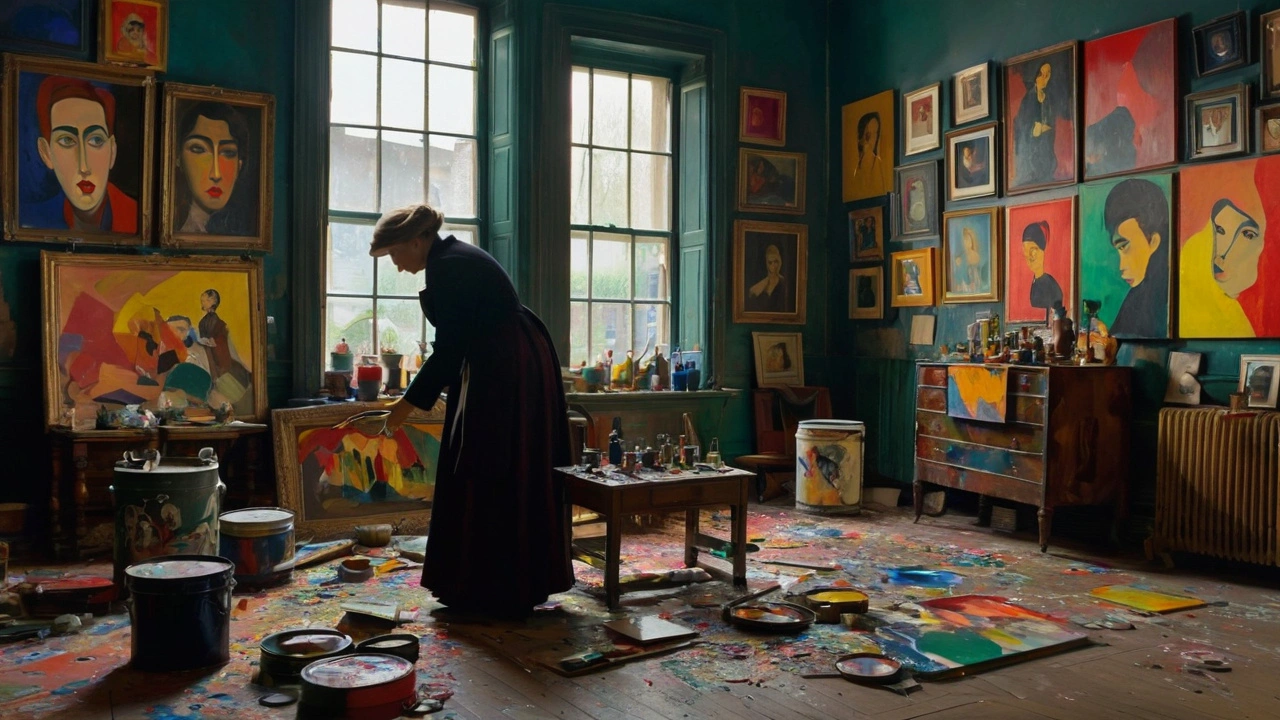
Impact on Modern Art
Expressionism's influence on modern art is profound and undeniably lasting. As a movement that emphasized the importance of representing raw, unfiltered human emotions, it paved the way for various 20th and 21st-century artistic efforts. Many modern art forms, ranging from Abstract Expressionism to contemporary street art, owe a debt to the foundational ideas of Expressionism.
Perhaps the most significant impact of Expressionism is how it liberated artists from the constraints of realism. Before Expressionism, many thought art's primary purpose was to depict the physical world accurately. Expressionists turned this idea on its head, suggesting art should reflect an artist's internal state and emotional experiences. This break from tradition allowed future artists to explore new avenues of creativity without feeling bound by the need to adhere to realistic representation.
Abstract Expressionism, which emerged in the mid-20th century, carries the legacy of Expressionism forward. Artists like Jackson Pollock and Mark Rothko took the emphasis on emotional intensity and abstracted it further, creating works that were even more focused on expressing the unconscious mind. Rothko's color fields, for instance, convey profound emotional depth through seemingly simple compositions.
Modern street art also shows Expressionism's mark. Artists like Jean-Michel Basquiat and Banksy incorporate raw emotions and social commentary into their works, mirroring the Expressionists' desire to engage with the contemporary world. Banksy's works, in particular, often include sharp critiques of society, delivering these messages through powerful, emotional imagery.
The influence of Expressionism extends beyond traditional visual arts. In cinema, directors like Ingmar Bergman and Alfred Hitchcock adopted Expressionist techniques to evoke particular moods and emotions. Bergman's use of stark lighting and shadow in "The Seventh Seal" creates a haunting atmosphere, much like an Expressionist painting. Hitchcock's thriller "Psycho" employs similar techniques, particularly in its iconic shower scene, to elicit intense emotional reactions from the audience.
Contemporary artists continue to engage with Expressionist ideas, often in innovative ways. For instance, digital artist Beeple blends startling, emotionally-charged imagery with technology, creating thought-provoking works that resonate with viewers on an emotional level. This fusion of traditional Expressionist themes with modern technology highlights the movement's enduring relevance.
Art critic Robert Hughes once said, "The only people left in America who seem to resent the basic premises of emotion and intuition in art are those who make it, and thus break their bones on the walls of their own invention." This quote encapsulates why Expressionism remains important today. By focusing on emotion, Expressionist works invite viewers to connect on a personal level, making art a more immersive, impactful experience.
In examining Expressionism's impact on modern art, it's clear that the movement did much more than introduce a new style. It fundamentally shifted how we think about art's purpose and potential. By focusing on emotional truth over physical reality, Expressionism allowed artists to explore the depths of human experience in unprecedented ways. This freedom has enabled generations of artists to push boundaries, innovate, and create works that challenge, move, and inspire us.

